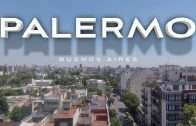Feria de San Telmo
San Telmo is the oldest barrio (neighbourhood) of Buenos Aires, Argentina. It is a well-preserved area and is characterised by its colonial buildings. Cafes, tango parlours and antique shops line the cobblestone streets, which are often filled with artists and dancers.
San Telmo‘s attractions include old churches, museums, antique stores and a semi-permanent antique fair (Feria de Antigüedades) in the main public square, Plaza Dorrego. Tango-related activities for both locals and tourists are in the area.
Feria de San Telmo is an antique fair that takes place every Sunday from 10 am to 6 pm. The fair is composed of 270 stands and is visited by 10,000 people every Sunday; the majority are tourists from all over the world. On the streets, you can see Tango Shows and Orchestra Playing for all visitors, also you can buy typical food from the restaurants or informal sellers. However, the main attraction in this Feria is the antiques and cultural items offered.
Known as San Pedro Heights during the 17th century, the area was mostly home to the city’s growing contingent of dockworkers and brick-makers, the area became Buenos Aires‘ first “industrial” area. The bulk of the city’s exports of wool, hides and leather (the Argentine region’s chief source of income as late as the 1870s) were prepared and stored here in colonial times. Previously separated from Buenos Aires proper by a ravine, the area was formally incorporated into the city in 1708 as the “Ovens and Storehouses of San Pedro.”
The neighbourhood’s poverty led the Jesuits to found a “Spiritual House” in the area, a charitable and educational mission referred to by San Pedro’s indigent as “the Residence;” their 1767 suppression led to the mission’s closure. The void left by the Jesuits’ departure was addressed by the 1806 establishment of the Parish of San Pedro González Telmo (or “San Telmo”), so named in honour of the Patron Saint of seafarers. The Jesuit Residence was shuttered in 1821, and San Telmo saw no public works for the next 30 years except a Black Infantrymen’s Quarters and the construction of the dreaded Mazorca Dungeon by Governor Juan Manuel de Rosas.
San Telmo began to improve despite these challenges, particularly after Rosas’ removal from power in 1852. The establishment of new clinics, the installation of gas mains, lighting, sewers, running water and cobblestones and the opening of the city’s main wholesale market led to increasing interest in the area on the part of the well-to-do and numerous imposing homes were built in the western half of San Telmo.
This promising era ended abruptly when an epidemic of yellow fever struck the area in 1871. The new clinics and the heroic efforts of physicians like Florentino Ameghino helped curb the northward spread of the epidemic, but as time went on it claimed over 10,000 lives, and this led to the exodus of San Telmo’s growing middle and upper classes into what later became Barrio Norte.
At first hundreds of properties became vacant. Most large homes became tenement housing during the wave of immigration into Argentina from Europe between 1875 and 1930. San Telmo became the most multicultural neighbourhood in Buenos Aires, home to large communities of British, Galician, Italian and Russian-Argentines.
San Telmo‘s bohemian air began attracting local artists after upwardly-mobile immigrants left the area. The increasing cultural activity resulted in the opening of the Buenos Aires Museum of Modern Art by critic Rafael Squirru in 1956, as well as in the 1960 advent of the “Republic of San Telmo,” an artisan guild which organised art walks and other events. San Telmo‘s immigrant presence also led to the quick popularisation of tango in the area. This soon became one of the city’s best-known tango music halls, helping lead to a cultural and economic revival in San Telmo.
The 1980 restoration of the former Ezeiza family mansion into the Pasaje de la Defensa (“Defensa Street Promenade”), has led to the refurbishment of numerous such structures, many of which had been conventillos (tenements) since the 1870s. As most of San Telmo’s 19th-century architecture and cobblestone streets remain, it has also become an important tourist attraction.











